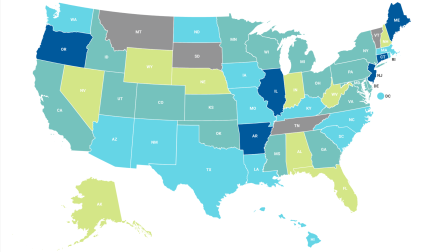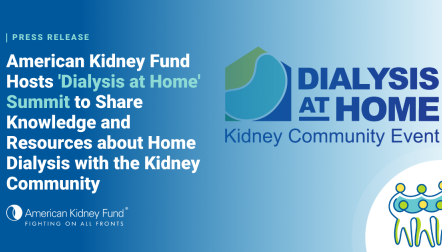
Blog post
Paired kidney exchange offers hope to people of color waiting for transplants

As a transplant surgeon and director of the George Washington University Transplant Institute, I have a special interest is in trying to get kidney transplants for as many people as possible. People with kidney disease who receive a kidney transplant live a much longer life and are generally much happier than patients who remain on dialysis.
We currently have an epidemic of kidney disease in the United States primarily due to a huge increase in the incidence of diabetes and high blood pressure, the two leading causes of kidney disease. There are five stages of kidney disease and once you enter into stage five, you must receive either dialysis or a kidney transplant to live.
Certain groups of people living with kidney disease are harder to transplant because they build up proteins (antibodies) in their blood that would cause their bodies to attack a new kidney transplant. Pregnancies, blood transfusions, certain types of infections, prior transplants and various other reasons can cause these proteins to build up in the blood.
Once these antibodies form in people's blood, transplant doctors must do special procedures to either remove the antibodies or avoid kidney donors whose kidneys would be attacked by those antibodies.
One of the simplest ways to avoid any problems due to rejection of a transplant is to avoid an interaction between antibodies that would react against a donor's kidney. A paired kidney exchange in its simplest form is really just exchanging a live kidney donor that you know for someone that you do not know, who was unable to donate to their friend or loved one because of incompatibility.
In other words, if you have a kidney donor who has a different blood type, they could give their kidney to someone else with the same blood type while that other person's donor of your blood type can then give their kidney to you; this is a paired kidney exchange.
Paired kidney exchanges can be dramatic. In 2010, I was part of a team that performed a 32-person swap: a new record at the time. Very few paired exchanges involve that many people, but they all have one thing in common: more than one person who needs a kidney receives one.
These daisy chains, or kidney swaps, offer hope for people living with kidney failure. There are currently 92,000 people on the kidney transplant waiting list, but we can only perform about 22,000 transplants a year because there are not enough organs available for everyone who needs one. By using a combination of fancy new medications and paired kidney exchange, we can increase the number of transplants performed by 1,000-2,000 per year, and we are well on our way to meeting that goal.
Paired exchanges are especially helpful in finding matching kidneys for people of color, who tend to have higher levels of antibodies in their blood. People of color tend to spend a longer period of time on hemodialysis, causing their bodies to create more proteins (antibodies). It is for this particular reason that I have focused my interest upon helping this group of people receive kidney transplants.
We in the transplant world have to be particularly concerned about the welfare of our Black patients because they are four to five times more likely to develop kidney failure, and therefore require dialysis or kidney transplants. When I started to focus on trying to increase access to kidney transplantation for people of color, it became obvious to me that we would have to find ways to deal with the buildup of these antibodies.
That is why I am such an advocate for paired exchanges. By facilitating paired kidney exchanges, we vastly increase the number of kidney transplants in this country and we can make kidneys available even for hard-to-match people.
As I stated earlier, kidney transplant is a life-changing therapy for people living with kidney failure, so we must do everything we can to get transplant for these people on the transplant waiting list.





